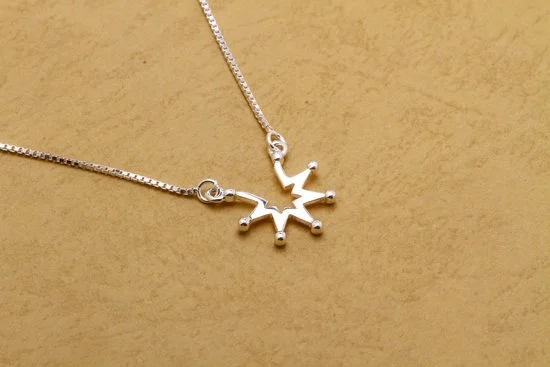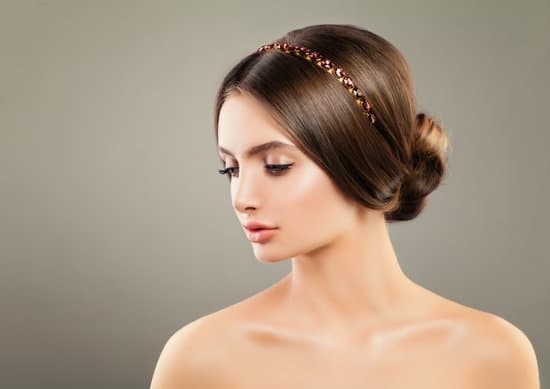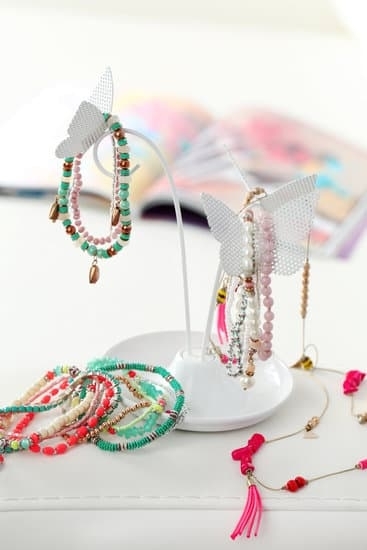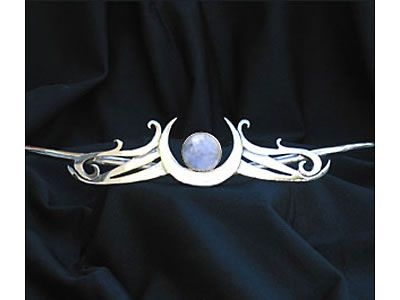Victorian Era jewelry boxes were a phenomenon that originated during the 19th century, in the Victorian period of Great Britain. Jewelry boxes from this era are highly sought after today due to their intricate and stunning craftsmanship, as well as their unique designs. This article will provide an overview of the history and construction of Victorian era jewelry boxes, so readers can learn more about them.
Early Development And Styles Of Jewelry Boxes During The Victorian Period
During the 19th century, Victorian era jewelry boxes began to be made out of different materials such as velvet-lined satinwood, mahogany and ebony; popular styles varied depending on the region. Popular designs from this period included intricate marquetry work on cedar wood lined with red velvet interior, against a marble top or shaped enamel curtains painted onto gilt backing.
These items often featured delicate hand carved detachable components like smaller boxes and trays for small pieces of jewelry. The overall look reflected a confident air of elegance associated with the burgeoning middle classes in England at that time.
How Today’s Replicas Capture The Magic Of Victorian Jewelry Boxes
Fortunately, today’s replicas capture all the style and beauty of their predecessors – many even featuring detailed inscriptions and carvings just as those created during their own age would have done. Whether finished in lacquer or polished walnut, reproducing these beautiful works is still possible today thanks to modern technology – allowing us all to experience a little piece of this incredible time in history throughout our homes.
Indeed, all aspects from size to coloration has been faithfully recreated to produce lasting keepsakes for customers worldwide – with inspiration even being drawn from original catalog pages or antique stores. Ultimately proving living testament to why thousands continue to seek out and enjoy these breathtaking treasures from times gone by.
Must-Have Pieces From Victorian Times
Victorian era jewelry boxes were a much cherished accessory from this period of time. Jewelry boxes of the Victorian Era were pieces of art, with intricate woodwork and beautiful designs. Below the surface, one would usually find more elaborate features such as secret compartments for prized possessions to be kept safe.
Additional details often included decorative labels or beautifully painted artwork on the lids or exterior walls that could signify family crests, initials, or special occasions. Premium quality materials would be used in the crafting of a Victorian era jewelry box; many times they could be made from high value woods such as mahogany, rosewood and walnut.
During the Victorian Era, it was customary for men to gift their partners with expensive pieces of jewelry during holidays or special occasions. Therefore owning a lovely jewelry box to store these wondrous gifts became a must-have item during this time period.
The boxes themselves began to feature even more attention grabbing details to convey luxury; small brass locks and keys would become popular components that lent value and security to its contents within. While some Victorians may not have owned any type of valuable gemstones or personal items of monetary worth, these jewelry boxes bore music technology that essentially turned them into miniature pianos upon opening the lid.
As fashion and trends changed drastically during the Victorian Era, so did designs for these precious boxes. They could take on less ornate shapes and mid-19th century versions typically feature round edges versus sharp angled ones found typically in antebellum jewelry heirlooms blocks – making them especially well suited for concealing coins and other treasure within their decked out frames.
Collectors today truly enjoy discovering Victorian era jewelry boxes at estate sales or antique stores; some even appreciate piecing together each individual part as an act of restoring it back to its original grandeur once again after all these years.
Unusual and Rare Decorative Details Of Victorian Jewelry Boxes
Victorian jewelry boxes were known for their ornate, decorative details. The boxes were often constructed with exotic materials that weren’t widely available such as ebony, ivory or tortoiseshell. Jewelers of the era even decorated the box interiors with velvet or silk linings to give them a luxurious feel.
Rare and unusual pieces contained intricate detailing such as delicate filigree work or intarsia designs featuring multiple woods of different colors. These detailed pieces were often acquired by upper class people who could afford them as they tended to be expensive due to the time taken to craft them.
Captivating colorful stained glass panels and geometric patterns adorn some of the rarest Victorian jewelry boxes. Many examples feature brass ornamentation and ornamental brass inlay which was popularized by Charles Lewis Tickner during Queen Victoria’s reign between 1837-1901.
A type of metalwork called mokume gane can also be found on these stunning works of art which is created by fusing layers of precious metals. This rare technique is still used today to create uniquely textured patterns like wood grain on modern pieces but it clearly has its origins in Victorian era jewelry boxes where it was originally developed.
Immaculately crafted souvenir jewelry boxes have become increasingly collectible since the mid 19th century when traveling tourists would purchase fine items produced in different countries during their travels as mementos from their vacation abroad. These alluring trinket receptacles are highly valued among collectors and often reflect many aspects of Victorians’ decadent lifestyle at the time.
They offer an enticing glimpse into what would otherwise be forgotten moments from our past history and feature a wide variety of custom shapes, sizes and exquisitely detailed ornamentation inside and out giving them an undeniable sense of style that no other period in history could match up to.
Symbolism
The Victorian era was filled sentiment and symbolism. This sentimentality was incorporated into everyday items, with jewelry boxes and trinkets entering the scene as a way to convey messages without speaking. During this period, gifts were intended to carry a deeper meaning than just a simple purchase from the store. These special pieces of nostalgia communicated thoughts such as love, loyalty, faithfulness, remembrance and hope.
This symbolic language between loved ones was celebrated during this time through intricate jewelry boxes that were made from different materials like wood or even bronze. Tasteful finishes in these pieces of craftsmanship added a sense of beauty and sophistication. Simple touches like gold decorations or engravings could communicate one’s sentiment further to the message on the box itself.
In addition to jewelry boxes being symbols of devotion, additional jewelry or trinkets in general often held hidden meanings too. Charms on bracelets served as emblems meant to signify personal interests or accomplishments while rings often carried romantic notions towards their recipient.
Brooches would symbolize dedication and loyalty if they had certain shapes or nuances engraved in them while necklaces might demonstrate belief due to religious symbols attached to them. Although today we have technology that makes it easier for us to express ourselves directly, there is still something classicly beautiful about appreciating Victorian Era Jewelry Boxes and the symbolism behind each piece of art used to create them.
Crafting and Reconstruction Of Victorian Jewelry Boxes
Victorian era jewelry boxes offer a unique item to be treasured. For centuries, many dedicated craftsman have employed traditional techniques to create these ornamental artifacts. It is difficult to precisely characterize the style of a Victorian-era jewelry box, as they come in all shapes and sizes depending on their original purpose.
Because these items were handmade, they tend to vary in design elements – although a general style can be observed with many antique jewelry boxes. If you are lucky enough to own one of these historic pieces of craftsmanship, you may be able to recognize some features that help define the age and origin of this work of art.
Many Victorian-era craftsmen employed a combination of mahogany or walnut for the construction of jewelry boxes. This was due to its natural availability and cost effectiveness as compared to other hardwoods such as rosewood or ebony wood which could be prohibitively expensive.
Historic special effects such as ivory carvings, brass hardware and imported fabrics also appear frequently on these unique pieces. Some more contemporary examples often feature unusual metal insertions made from silver and gold to give a bolder look than their earlier counterparts.
The reconstruction process requires a good understanding of balance, proportion as well as an eye for detail when it comes to making sure that everything is in place before applying the finish coats. After carefully cleaning any metal components such as hinges or locks, reconstructed vintage jewelry boxes are sanded only slightly prior to reassembling all the parts together so it results in an even finished appearance across the board.
Applying coats of stain, wax or specialized oils is required for added protection from everyday wear and tear – especially if the piece is intended for regular use. Finally inspecting each piece through multiple angles will help ensure nothing has been overlooked during the reconstruction process before declaring it finalized and ready for presentation.
Cultural Significance Of Specific Designs and Styles From The Era
The Victorian Era was a time of great cultural importance and growth. During this period of time, people put a huge emphasis on beauty, craftsmanship, and artistry both in the home and in the public sphere. This was especially true in regards to jewelry boxes, as many different designs and styles were created in an effort to show off one’s elegance and sophistication.
One of the most popular jewelry box designs from this period was the ‘Biedermeier’ style box. This type of box consisted of a rectangular or square shape with smooth wooden panels in either walnut or rosewood. The wood was often adorned with carvings or intricate marquetry depicting flowers, animals, and repeating geometric shapes.
The lid also featured a decorative lock for extra security which often had symbols like hearts and stars carved into it. These boxes were not only aesthetically pleasing but also quite practical due to their small size which allowed them to be kept both at home and while traveling.
Another common design style derived from the era is Rococo-style jewelry boxes. These featured ornate gilded metal mounts via applied decoration such as flowers, foliage, vines and mythical creatures demonstrating extravagance during this period. Many of these pieces would have lace linings as well as retractable drawers which held items such as rings and other small trinkets securely inside the box away from prying eyes.
Overall, it can be seen that jewelry boxes during the Victorian Era served many purposes other than secure storage for precious items; they provided an opportunity for expressing one’s taste for fine craftsmanship through intricate decorative designs that showcased one’s luxurious lifestyle during the era. Each design subtly showcased differences between social classes by allowing those who could afford it to display their wealth with intricate details that set them apart from those who couldn’t afford them.
Tips For Recognizing Authentic Victorian Era Jewelry Boxes
The Victorian era was a period of extravagance and opulence, and jewelry boxes of the era were no exception. People often bought these boxes as status symbols to reflect their wealth and position in society. It’s not hard to imagine why they would be highly sought-after antiques today.
To begin with, one must recognize that there are slight differences aesthetically between original Victorian designs and modern reproductions. While modern copies may be appropriate for certain situations, when it comes to collecting Victorian jewelry boxes for their historical value or monetary benefit, authenticity is essential.
When identifying an authentic piece from the Victorian Era, look for a simple design without ornamentation. These items tended to feature wood carved in basic geometric shapes such as squares or rectangles.
The top should feature a low relief floral or scrollwork carving that is not overly ornate but still within the classic lines of the period. Unusual shapes were rarely used back then which means more intricate motifs like those found on newer pieces may be red flags for a reproduction instead of an original antique item.
The color of traditional Austrian jewelry box is also important to note with authentic Victorian era pieces tending to have light finishes made from woods such as mahogany or rosewood rather than painted decorations as found on recent reproductions. Joints should be tight yet somewhat visible – original designs did not use delicate veneers or lacquer so brush marks from either may point toward a new fabrication.
Finally, if possible try to inspect closely any interior storage mechanisms supplied on the piece – compartments with drawers that fit perfectly show the attention given by skilled craftsmen during production back in the 19th century which could raise its historical value even further.
Conclusion
The Victorian era is considered to be one of the most influential times in history when it comes to jewelry box design. During this period, new materials and crafts became available, allowing for artisans to push the boundaries of what was possible. As a result, numerous styles of jewelry boxes were introduced making them both ornate and functional.
One popular style introduced was the dower chest, which typically featured multiple drawers with intricate carvings on their facades. Utilizing innovative dexterity, these wooden chests were also decorated with precious metals such as silver or gold.
The introduction of glass allowed for designers to create display cases that could be used to showcase valuable pieces of jewelry or items such as watches and clocks. Further advances included pieces adorned with velvet-lined open compartments or hidden interior drawers that could only be accessed by a secret lock mechanism.
The use of sandalwood and teak presented opportunities for luxury boxes designed in late Victorian England with exotic finishes that involved inlayed ivory, stained woods and marquetry effects. Today’s modern interpretations often opt for similar themes paying homage to their more traditional counterparts while others are created using high grade plastics and synthetic materials instead.
In conclusion, the advances made in jewelry box designs during the Victorian era lead to a wide range of beautiful creations with efficient storage solutions that remain popular even today. Not only do they make beautiful statement pieces, but they are also incredibly useful for keeping our most treasured possessions safe from damage when not in use.

Welcome to my jewelry blog! My name is Sarah and I am the owner of this blog.
I love making jewelry and sharing my creations with others.
So whether you’re someone who loves wearing jewelry yourself or simply enjoys learning about it, be sure to check out my blog for insightful posts on everything related to this exciting topic!





